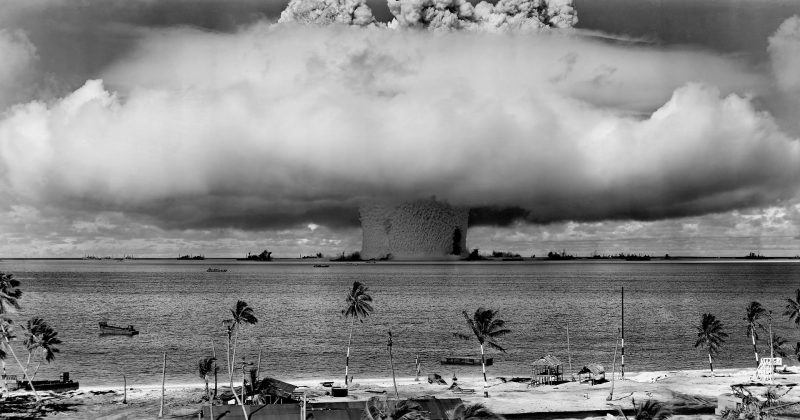In 1958, a nuclear bomb landed in the Gregg yard. It made a crater, killed some poultry, injured some family members (not too seriously), and destroyed their car.
Fortunately, the bomb, dropped from a B-47 when Captain Bruce Kulka accidentally pulled the wrong lever – almost ejecting himself in the process – was not fully armed.
At this week’s international conference on nuclear weapons in Vienna, incidents of this sort were highlighted. And yes, there were more incidents like what happened in the Greggs’ yard with other nuclear bombs.
According to Eric Schlosser, an author from the U.S., “we were lucky to get out of the Cold War without a nuclear detonation.” He recounts the Gregg incident and more in his book Command and Control.
Schlosser spent six years doing research for his book. He went through thousands of pages of documents that he was able to obtain through the Freedom of Information Act. He also interviewed a number of senior personnel in the U.S. nuclear weapons program.
In 1961, a B-52 bomber went into a spin over North Carolina. The force of the spin pulled a lanyard that released a fully primed hydrogen bomb. “There was one switch in that weapon that prevented a full-scale detonation of a hydrogen bomb hundreds of times more powerful than the Hiroshima bomb,” said Schlosser.
In 1968, a B-52 carrying four hydrogen bombs crashed near the Thule air base in Greenland. The explosives around the nuclear core detonated, but a full nuclear explosion was avoided. Still, radioactive material was released into the area. Part of one of the weapons was never recovered.
In 1980, Zbigniew Brzezinski, a U.S. national security adviser at the time, was awakened at 2:30 in the morning to the news that 220, later changed to 2200, nuclear missiles were inbound from Russia. Brzezinski was getting on the phone to call President Jimmy Carter, and U.S. bomber crews were already starting their engines when the alert was aborted. It was a false alarm caused by a faulty computer chip that cost less than $.50.
With the end of the Soviet Union came the end of the Cold War. Technological advances and security improvements have been implemented to cut down on the chances of accidents. The U.S. claims that their nuclear missiles are pointed at the middle of the ocean and their bombers no longer fly routine missions with nuclear weapons.
Still, it is believed that there are 16,300 nuclear weapons in the world spread among nine countries. 1800 of those weapons are ready to launch with little notice. Experts are not ready to relax about the threat of accidental nuclear detonation just yet.
Although the nuclear warheads have been modernized, the systems supporting and transporting them are antiquated – accidents still occur.
The Isle Longue nuclear submarine base in France has had security breaches. In 2009, two British and one French nuclear submarine allegedly crashed, according to Jean-Marie Collin, the head of a group that represents twenty French MPs that are seeking disarmament.
The Daily Express periodical in Britain has reported that there have been 44 fires on British submarines in the last four years.
Bruce Blair, a former U.S. control officer for nuclear missiles who now works for Princeton University, is most concerned about the continually reducing amount of time needed to deploy a nuclear weapon. They are nearing an alarming state of “hair-trigger readiness.”
“Russia has shortened the launch time by automating the firing process. High command posts in the Moscow area need only seconds to directly fire missiles out of silos as far away as Siberia,” Blair said.
A new threat has emerged since the Cold War. Because of the high amount of automation in nuclear weapons, they are “by their nature extremely vulnerable to cyber-attack,” said Camille M. Francois, an expert from the Harvard Law School’s Berkman Center for Internet and Society.
She points out that policymakers tend to focus on lone hackers and believe that attacks will come from the Internet. “It’s not kids anymore. It is states investing very heavily in cyber-warfare. This is the new battlefield, the fifth domain of war,” she said.
Mark Fitzpatrick, the former U.S. State Department official who currently works for the International Institute for Strategic Studies, said that the lack of a nuclear explosion by accident, mistake, or miscalculation means that “weapons custodians take their task seriously.”
“On the other hand, I think the world has been very lucky not to have experienced such an occurrence… The urgency of the issue can be exaggerated, but I would not discount the risk or the devastating consequences of failure.”
“Nuclear weapons are the most dangerous weapons ever made,” said Schlosser. “This technology has never been under our control since the very beginning.”
